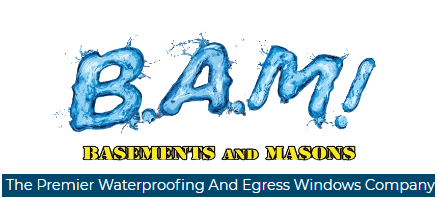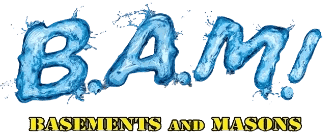Nothing is more frustrating than stepping out onto your property and noticing uneven concrete surfaces like driveways, patios, and sidewalks. These unsightly and potentially hazardous tripping hazards can be caused by several factors, including soil settling, weathering, or poor initial construction. When it comes to repairing sunken and uneven concrete surfaces, two popular methods have emerged – mudjacking and polyfoam concrete leveling. Both methods aim to raise and level concrete slabs, but they differ significantly in their approach and results. In this blog, we will explore why polyfoam concrete leveling stands out as the superior choice over mudjacking, offering homeowners a cost-effective, efficient, and long-lasting solution to their concrete repair needs.
Understanding Polyfoam Concrete Leveling
Polyfoam concrete leveling is a modern and efficient process that utilizes high-density polyurethane foam to raise and level uneven or sunken concrete slabs. The polyfoam is injected into small holes drilled in the concrete, where it expands and lifts the slab, providing an even surface. This method is also commonly known as polyjacking or polyurethane foam lifting.
Efficiency and Speed
One of the most notable advantages of polyfoam concrete leveling over mudjacking is its efficiency and speed. Mudjacking involves pumping a heavy mixture of water, soil, and cement under the sunken concrete to lift it. This process can be time-consuming and labor-intensive, causing unnecessary disruptions to your daily life and activities.
On the other hand, polyfoam concrete leveling is a quick and efficient process. The lightweight polyurethane foam is injected into small holes in the concrete, where it expands and fills voids, lifting the slab to the desired level. The foam sets rapidly, allowing you to resume regular use of the repaired surface within hours, not days.
Environmental Friendliness
Polyfoam concrete leveling takes the environment into consideration. The polyurethane foam used in the process is environmentally friendly and non-toxic. Furthermore, because polyfoam repairs are long-lasting and durable, there is a reduced need for future repairs, minimizing waste and lowering the environmental impact.
Mudjacking involves the use of cementitious grout, which requires substantial amounts of water and cement. The runoff and waste generated during the process can have negative consequences on the environment.
Minimal Disruption and Aesthetics
Polyfoam concrete leveling requires drilling small holes into the concrete. These holes are inconspicuously patched once the leveling process is complete, leaving minimal evidence of repair. This ensures that your property’s aesthetics remain intact, and there is minimal disruption to your landscape.
Mudjacking, however, requires larger and more noticeable holes, which can be an eyesore and may affect the overall appearance of your property. Additionally, the process of pumping grout can be messy, leaving behind unsightly residue.
Long-Term Stability
Polyfoam concrete leveling offers long-term stability and durability. The polyurethane foam is lightweight yet strong, providing excellent support for the lifted concrete. It does not compress or degrade over time, ensuring that the repaired surface maintains its level position for years to come.
In contrast, mudjacking utilizes a heavier material, which can lead to further settling and sinking over time. The heavier weight of the mud slurry can cause stress on the soil beneath the concrete, potentially leading to additional problems in the future.
The Polyfoam lifting Process Explained
Site Inspection: The first step involves a thorough inspection of the concrete surfaces that need leveling. A professional contractor will assess the extent of the damage and determine the appropriate amount of polyurethane foam needed for the project.
Drilling Injection Holes: Next, small injection holes are strategically drilled into the sunken concrete. These holes are typically around 5/8 inches in diameter, and their placement ensures that the foam can evenly distribute beneath the slab.
Polyfoam Injection: A two-part polyurethane foam is injected into the holes. The foam mixture combines and expands, filling any voids and spaces beneath the concrete. As the foam expands, it gently lifts the concrete back to its original level.
Patching and Finishing: Once the concrete is properly leveled, the injection holes are filled with a concrete patch, leaving minimal evidence of the leveling process.
Why choose Polyfoam for your concrete lifting needs
When it comes to concrete leveling, polyfoam concrete leveling emerges as the clear winner over mudjacking. With its cost-effectiveness and durable results, polyfoam concrete leveling provides homeowners and businesses with a reliable solution that ensures safe and level concrete surfaces for years to come. So, consider the many benefits of polyfoam concrete leveling and make the smart choice for your concrete repair needs. So, say goodbye to uneven concrete surfaces and hello to a beautiful, level outdoor space with polyfoam concrete leveling! Enhance the value of your home, improve safety, and enjoy the peace of mind that comes with a job well done.
Call the Polyfoam concrete lifting Experts
Before embarking on your concrete leveling project, it’s crucial to engage a reputable and experienced Polyfoam concrete lifting contractor. Make sure they have a record of successful polyfoam leveling projects and can provide you with references from satisfied customers.
BAM Basements and Masons of Des Moines provides Polyfoam concrete lifting with highly trained professionals. We offer free estimates and upfront honest solutions for your home. If your home needs concrete lifting give the best concrete leveling company in Iowa a call. We service Des Moines, Iowa, and surrounding areas.


